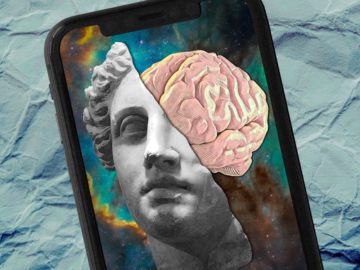Bhav Jain and Simar Bajaj in Smithsonian:
 Imagine you’re in a room with a hundred American young adults, bright-eyed and bushy-tailed. Over their lifetimes, about 25 of them will have a stroke; 40 will get cancer. And an astounding half the room will develop a mental illness, if they haven’t done so already.
Imagine you’re in a room with a hundred American young adults, bright-eyed and bushy-tailed. Over their lifetimes, about 25 of them will have a stroke; 40 will get cancer. And an astounding half the room will develop a mental illness, if they haven’t done so already.
The United States’ mental health epidemic has been simmering for decades, with Covid-19 both illuminating and exacerbating the crisis. Given the social isolation, job insecurity and weakened support systems over the past few years, the World Health Organization estimated a 25 percent increase in anxiety and depression worldwide, with women and young people worst hit. A large part of the challenge are the cavernous gaps in care: 158 million Americans live in an area with a shortage of mental health workers. And while the rise of telehealth and creation of the 988 suicide and crisis lifeline have helped, they are only Band-Aids, barely holding together a system failing at its seams. “We’re at a point in the U.S. where it almost couldn’t get worse,” says Kenneth Pages, a Florida doctor and former chief of psychiatry at Tampa General Hospital. “Describe worse to me at this point.”
More here.
